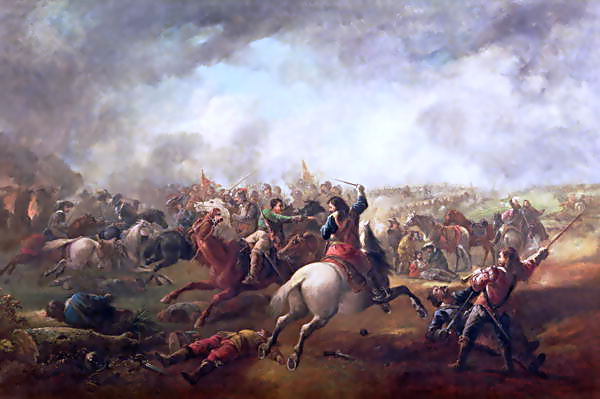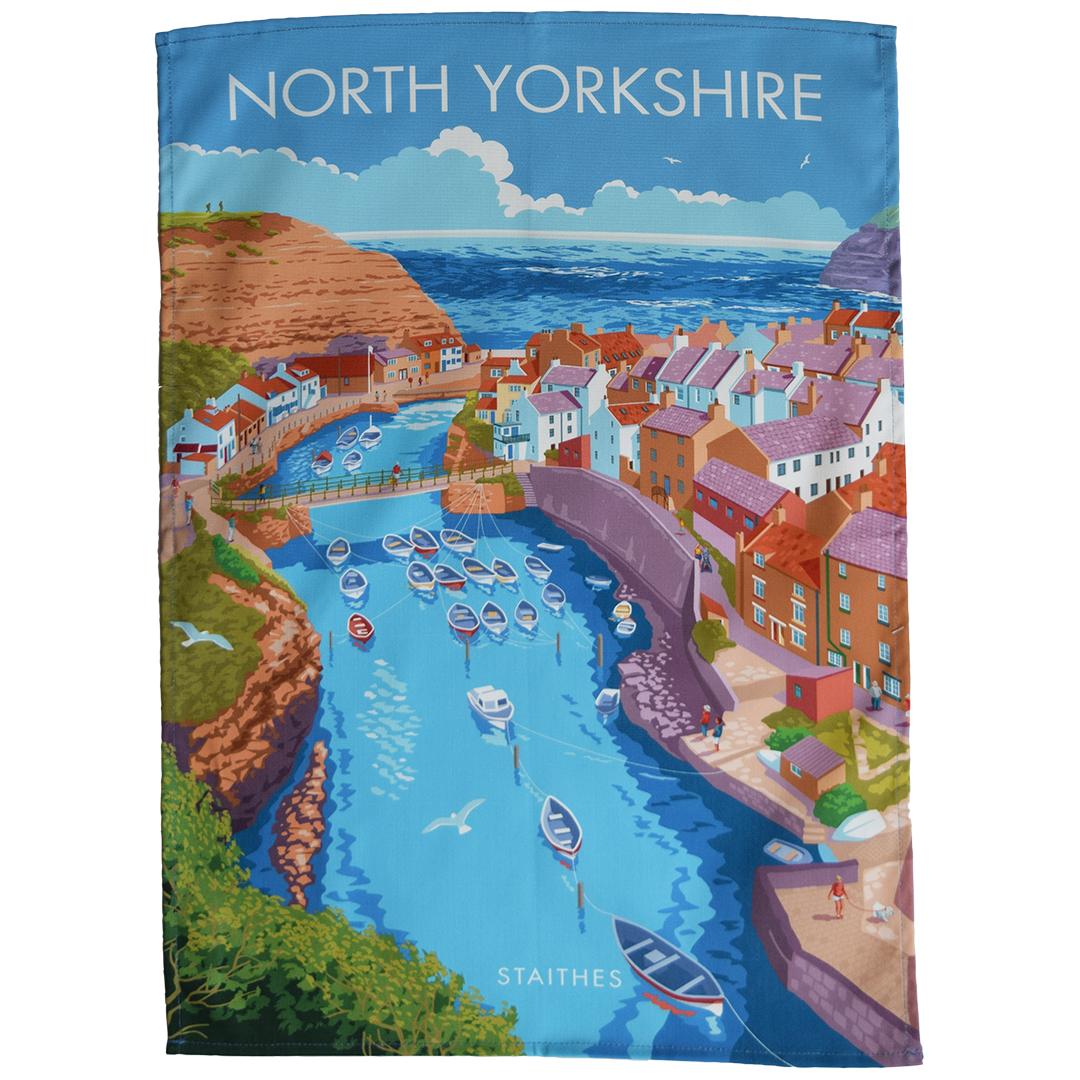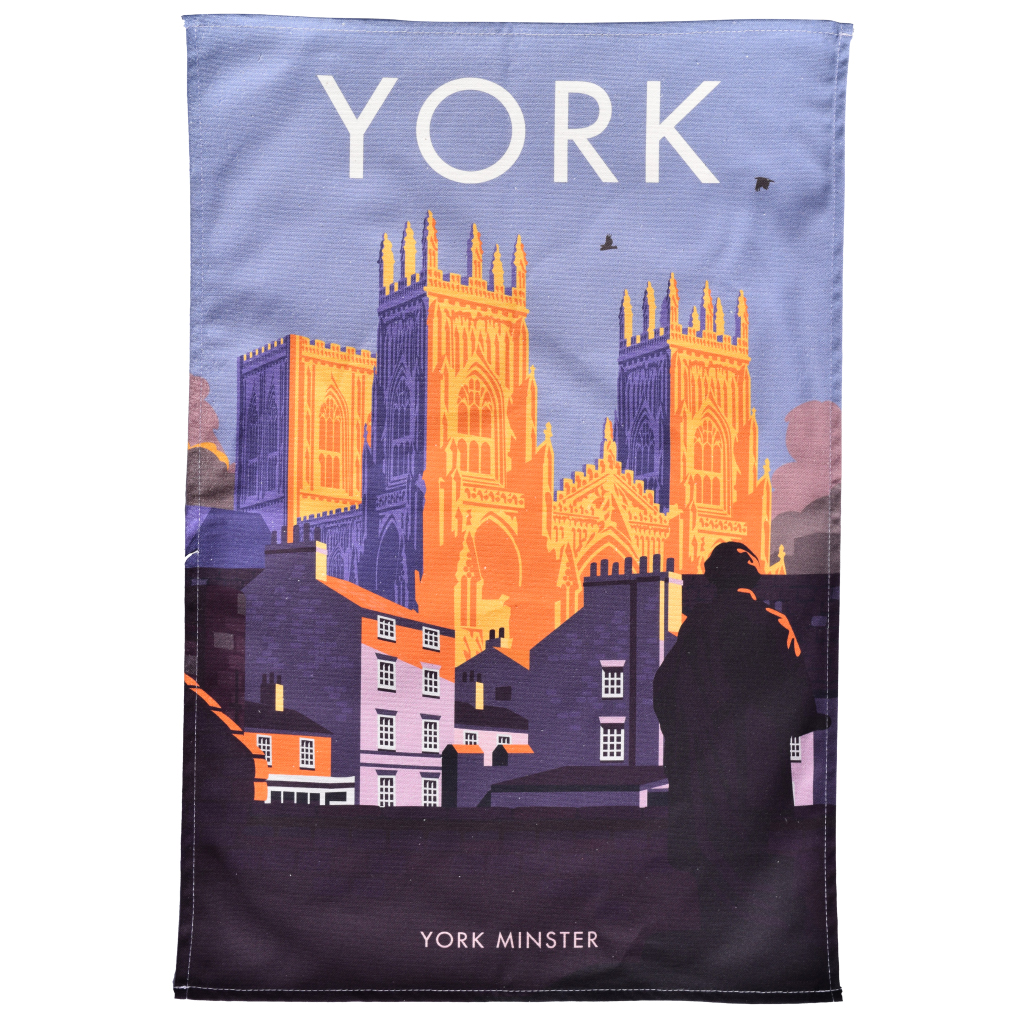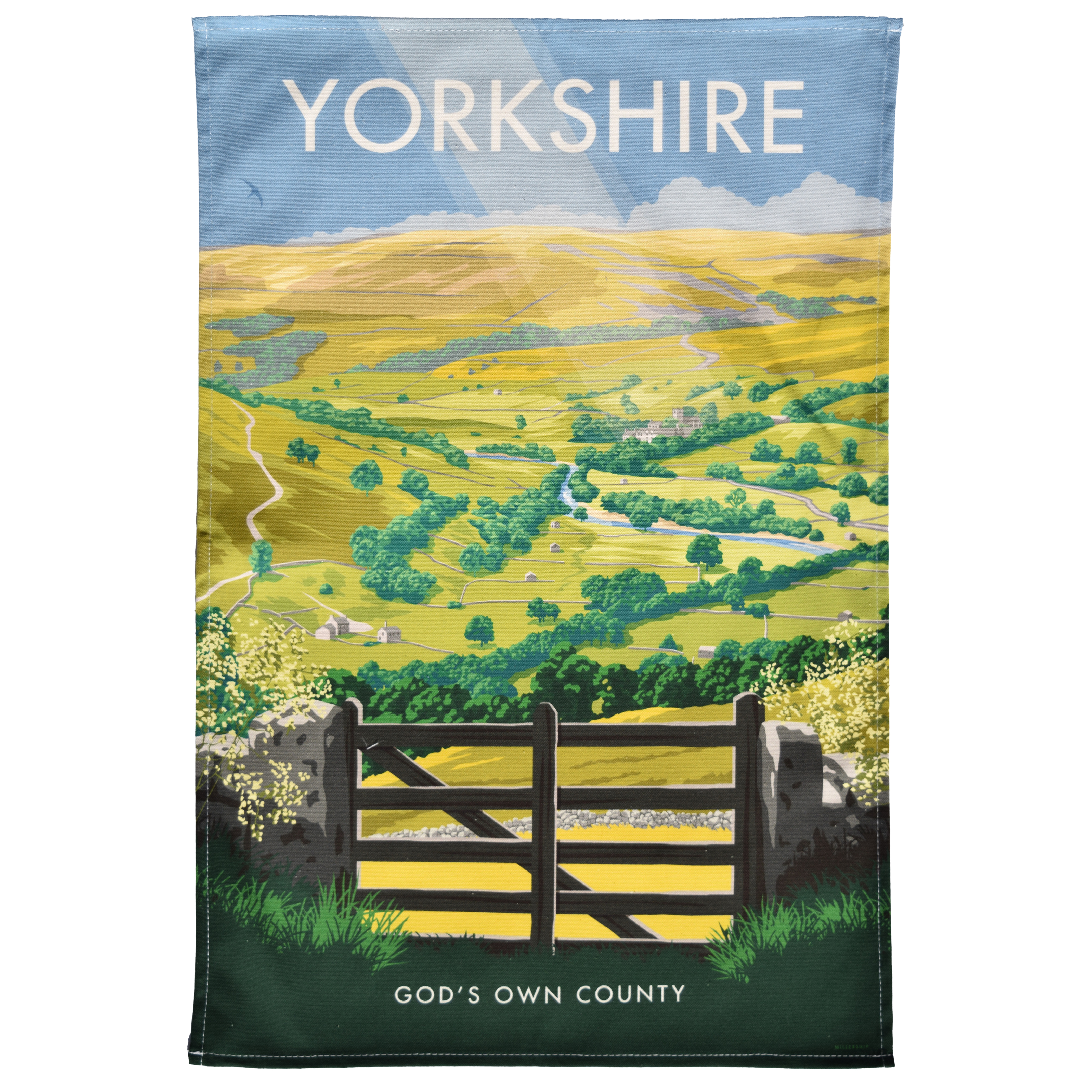God's Own County: Yorkshire and the Not-So-Civil War
Posted by Pete on 17th Nov 2021

Our historian, Pete, dives into Yorkshire's exciting history...
There’s a reason it’s known as God’s Own County.
With three different National Parks at least partly within its borders, the historic County of Yorkshire has some of the largest stretches of unspoiled countryside in the whole of England.
The craggy heights of the Yorkshire Dales, the peaty expanses of the North York Moors, and the dramatic wind-swept cliffs of the Dinosaur Coast – Yorkshire really does have it all.
Staithes is one of the most popular destinations in Yorkshire, perfect for exploring the world-famous Dinosaur Coast
Click here to view our Staithes tea towel
But the landscapes of Yorkshire have also been the stage for many of the most dramatic events in English history.
Let me take you back to the time of the English Civil War. The country was divided. It was the King versus Parliament, Cavaliers versus Roundheads.
1643 was a bad year for King Charles I. Scottish Protestants had signed a deal with Parliament, and were now marching south into England.
Until then, the North of England had been something of a stronghold for the Royalists.
But now the northern stronghold was at risk: in April 1644, Parliamentarians laid siege to York, the linchpin of the King’s power in the North.
During the siege, cannon balls were allegedly fired through the windows of York Minster, though luckily the famous 'Heart of Yorkshire' stained glass survived.
Click here to view our York Minster tea towel
Prince Rupert of the Rhine, a German princeling and the Royalists’ most famous commander, was sent north to try and save the day for Charles.
With him went his trusty hunting poodle, inventively named ‘Boy’.
Prince Rupert had received Boy as a gift to keep him company while imprisoned in the Austrian fortress of Linz during the Thirty Years War (1618-48). Since then, man and dog had been inseparable.
By then, Boy was already (in)famous, a favourite target of Parliamentarian propagandists. Some even said that the dog was actually a witch’s familiar, if not the Devil himself in disguise.
Royalist troopers, meanwhile, promoted Boy to the rank of Sergeant-Major-General in Charles’ army.
So, Rupert and Boy marched north with thousands of soldiers, via Cheshire and Lancashire, before crossing the Pennines into Yorkshire at the end of June 1644.
The Prince deftly outmanoeuvred the so-called ‘Army of Both Kingdoms’, forcing the Allied Scots and Parliamentarians to abandon their siege of York.
After some days of posturing, the two armies squared up on Marston Moor.
The beautiful landscapes of Yorkshire, 'God's Own County', the scenery for one of history's most important battles.
Click here to view our Yorkshire tea towel
Rupert drew up his royal forces behind the cover of a drainage ditch, while the Allies took position on some high ground along Marston Hill. Commanding the Parliamentary cavalry on the left was a young Lieutenant General, Oliver Cromwell.
The fighting began on the rainy evening of 2nd July 1644.
It was mayhem, with cannons firing and horses charging in every direction. Neither side seemed to have the upper hand.
The battle went on through the night, until Cromwell rallied enough horsemen together to force a victory for Parliament.
When the dust settled, thousands of men lay dead on Marston Moor. Most had fought for Charles, with one group of Royalists fighting almost to the last man, long after the battle was clearly lost.
And among the bodies was that of a white hunting poodle.
Boy had been safely tied up in the Royalist camp before the battle, but broke free to chase Prince Rupert into the fray. He has since been honoured as the first official British Army Dog.
Defeat at Marston Moor set King Charles on the road towards defeat and execution.
If the locals are to be believed, Yorkshire may well be ‘God’s Own County’, but its fields have nevertheless been host to plenty of ungodly bloodshed.
From the Roman legions, through the Vikings, to the War of the Roses and the Battle of Marston Moor, Yorkshire has many times in history been turned into the hellscape of a battlefield.
Thankfully, the Civil War was the last time Yorkshire was scarred by a major battle: its beauty can now be enjoyed in relative peace.




